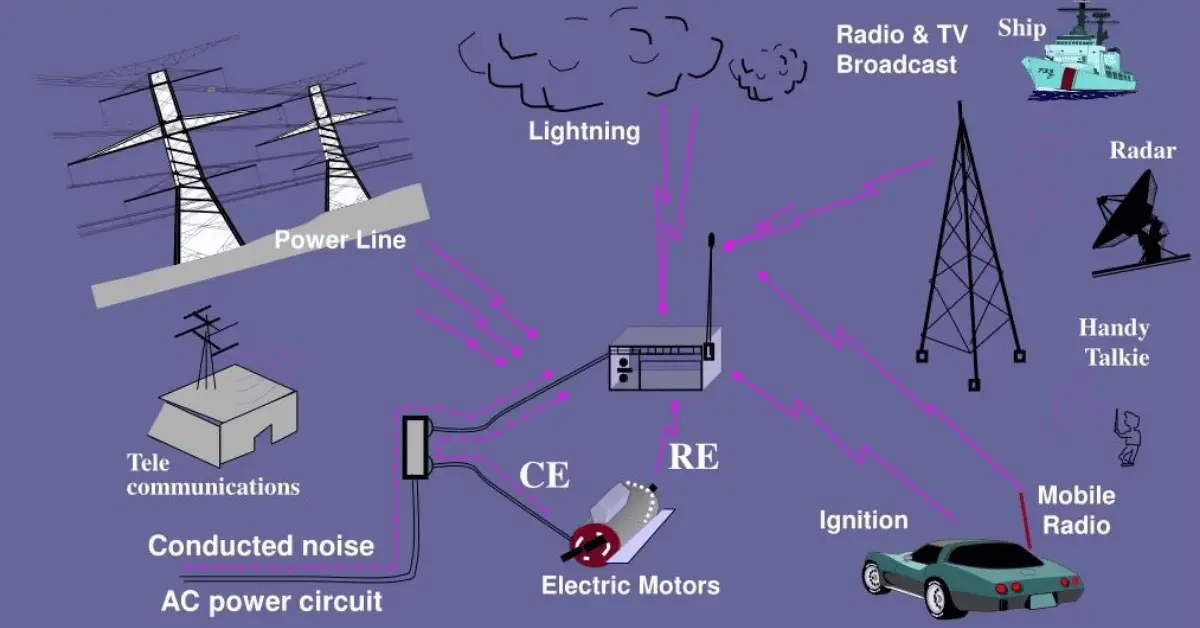
<< radio home
<< index
by disinfoniacs #69 & #1
>>>>
Ham radio communication can sometimes encounter technical issues, even for experienced users. One common problem is overloading the microphone by speaking too close to it. Microphones are sensitive instruments, and overloading can cause distortion or clipping in the transmitted audio. A good practice is to maintain a distance of one to two inches while speaking into the microphone. If someone tells you that your FM handheld or mobile transceiver is "overdeviating," it means that the modulation level is too high, and you should speak farther away from the microphone to prevent distortion.
Another issue that can occur is RF feedback, where the transmitted signal feeds back into the equipment, causing garbled or distorted voice transmissions. A ferrite choke, which is a type of filter, can be used to prevent RF current on the shield of a microphone cable, which is a common cause of distorted audio.
Other common causes of distorted signals are transmitter slightly off frequency, batteries running low, bad transmit location.

Interference is one of the most common issues faced by amateur radio operators. It can be caused by a variety of factors, including fundamental overload, harmonics, and spurious emissions. Fundamental overload occurs when your radio receives a signal that is too strong, causing distortion and interference. This can happen, for example, if you are operating your radio in close proximity to another strong radio signal.
Harmonics refer to the additional signals that are generated in addition to the primary one. These additional signals can cause interference with other radios operating on nearby frequencies. For example, a radio operating on a frequency of 144 megahertz may also generate a lower power harmonic at 288 megahertz, which is double the operating frequency.
Spurious emissions are another type of interference that can occur in radio communications. These emissions can be either a strong harmonic or odd frequency generation, such as the noise that your speakers make when your cell phone gets too close. Spurious emissions can be caused by a variety of factors, including poor grounding, poor shielding, and faulty components.
To avoid interference and ensure clear communication, it is important to properly tune and adjust your radio equipment, and to be aware of the presence of other signals in the area. Additionally, using proper filters and shielding can help to minimize interference caused by harmonics and spurious emissions.
If your signal is suffering from harmful interference by something else, like a noisy transformer in a neighbor's home, there are several things you can do: Work with your neighbor to identify the offending device, politely inform your neighbor about the rules that prohibit the use of devices that cause interference, check your station and make sure it meets the standards of good amateur practice.
Another important consideration when it comes to interference is the impact of radio transmissions on other electronic equipment. Radio transmissions can affect telephones, television, and radio reception in many cases. Some broadcast radio receivers in cars pick up ham radio signals as interference if the receiver is unable to reject strong signals outside the AM or FM band.
If you receive a complaint from a neighbor that your station’s transmissions are interfering with their radio or TV reception, it is important to take the complaint seriously and investigate the issue. First, make sure that your station is functioning properly and that it does not cause interference to your own radio or television when it is tuned to the same channel. An overload of a non-amateur radio or TV receiver by an amateur signal can be eliminated by blocking the amateur signal with a filter at the antenna input of the affected receiver. If the issue is cable television interference, the first step is to be sure all TV feed line connectors are installed properly.
Coaxial cables are an essential part of any ham radio station. These cables connect your transceiver to your antenna and carry the radio signal between them. However, moisture contamination is the most common cause of failure of coaxial cables. When water gets into the cable, it can corrode the conductors, degrade the dielectric material, and increase the cable's loss.
Air core coaxial cables are more susceptible to moisture contamination than foam or solid dielectric types because they have no insulation to protect against moisture. Therefore, it is important to take special precautions when using air core coaxial cables. One way to protect against moisture contamination is to use weather-resistant connectors that seal the connection between the cable and the antenna.
In addition to moisture contamination, ultraviolet light can damage the jacket of a coaxial cable and allow water to enter. Therefore, it is important to use UV-resistant cable jackets or to protect the cable from direct sunlight.
To troubleshoot any issues with your station, it is recommended to follow the scientific method. This involves changing one thing at a time, testing the change, and then moving on to the next thing. This approach helps to isolate the issue and determine the cause of the problem.
<< previous lesson | next lesson >>
---
<< radio home
<< index
